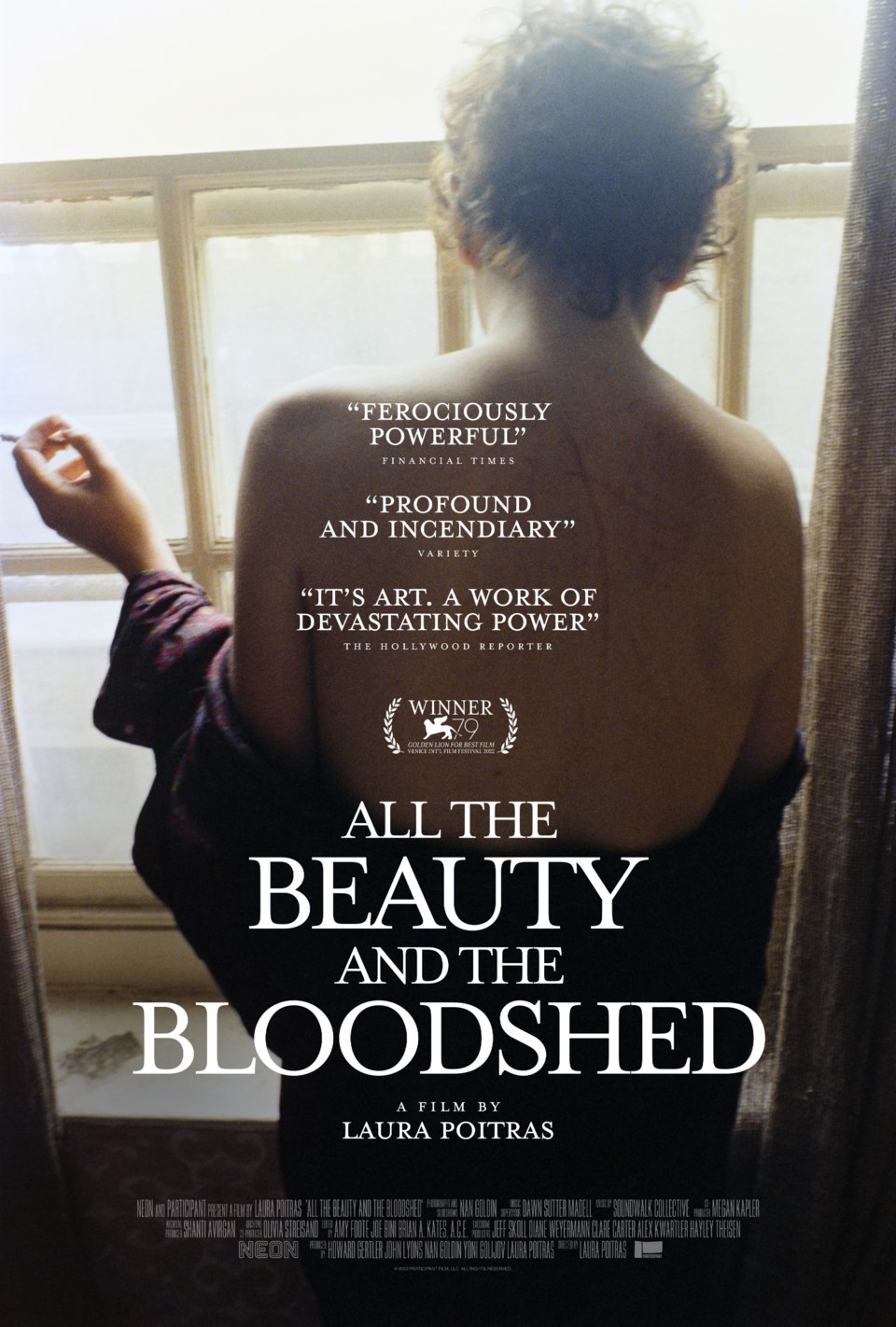Nan Goldin, the subject of Laura Poitrasã documentary ã ,ã is a name you probably either know well or not at all. In the art world, she is unequivocally famous. Her photographs depicting downtown life in the late 1970s and '80s and the vibrant, glamorous bohemians she encountered on the scene, like John Waters It-Girl Cookie Mueller, have been displayed at the Whitney, the Tate and MoMA.
To look at any of the photos in her most well-known work, the ever-evolving slideshow ãThe Ballad of Sexual Dependency,ã you can see how influential she was on generations to come with her raw, public-private snapshots of parties that didnãt end until dawn, beautiful ãqueensã and even her face, one month after a ãdope-sickã boyfriend beat her so badly she almost lost her eye. The New York Times review of a collection of those photographs at the time said that ãThe Balladã was to the 1980s what Robert Frankãs ãThe Americansã was to the 1950s. And it would become a devastating document of many of the young lives lost in the AIDS epidemic.
This is only part of Goldinãs story, as youãll learn in ã ,ã which begins its theatrical run this week in New York before expanding to more markets in the coming weeks. Poitras, the Oscar-winning filmmaker behind ã ,ã started filming Goldin to document her protest efforts against museums accepting money from the Sackler family. Their company, Purdue Pharma, developed and marketed the widely prescribed and widely abused painkiller OxyContin, the brand name for the opioid oxycodone. Opioids, which also include fentanyl, have been linked to more than 500,000 deaths in the U.S. over the past two decades.
Goldin several years ago found herself addicted to opioids which she was prescribed for a surgery and took according to instructions. But, she said, she became addicted overnight. When she got out of treatment, she started reading about Purdue and the Sacklers, a name she associated with museums and philanthropy. Sackler-run foundations have given many millions of dollars to some of the worldãs most prestigious museums and universities, from the Guggenheim to Oxford. And her mission became clear: To use her status in the art world to get museums to stop accepting money from the Sacklers, take down their name from galleries and to change how we think about addiction and treatment. And partially as a result of her efforts, many museums from the Louvre to the Met, have distanced themselves from the Sacklers.
Poitras smartly saw that there was a very clear through-line from what Goldin did in the '80s, when she came out of rehab and saw all her friends dying of AIDS, and what she was doing now. The documentary weaves together these threads to make a holistic portrait of an artist's battle cry.
Though the Sackler protests are the hook, the filmãs strongest portions are its historical ones. Poitras artfully overlays Goldinãs heartbreaking eloquence with her photographs and a camera shutter soundtrack. Goldin speaks about everything from her stifling childhood in suburbia to the ripple effect of her older sister Barbaraãs teenage institutionalization to her death by suicide at age 18 that left Nan, then Nancy Goldin, bouncing between foster homes. It wasnãt until she found a camera that she found her voice and her true family (her friends).
There are some particularly devastating family realizations that Poitras and Goldin save for last. It's trite to call that an origin story, but with Goldin, everything stemmed from those confusing days. Sheãd been told early on never to let the neighbors know about their troubles. Brushing it under the rug, not talking about it and not dealing with it would destroy them, though.
Goldin might not have known it when she started photographing her LGBTQ friends, but her work has always been about looking at the so-called fringe cultures in society, about showing the problems that the masses would rather just ignore and making them so urgent that you canãt look away anymore. It is an act of hope in the idea that things could be better because the alternative, the silence, is infinitely worse. Goldin would know.
As Goldin says at the start, ãItãs easy to make your life into a story. But itãs harder to sustain real memories."
ãThe real memories are what affect me now,ã she continued. ãEven if you donãt actually unleash the memories, the effect is there, itãs in your body.ã
ãAll the Beauty and the Bloodshed,ã a NEON release in limited release now, expanding on, has not been rated by the Motion Picture Association. Running time: 117 minutes. Three and a half stars out of four.
___
In a story published Nov. 25, 2022, reviewing ãAll the Beauty and the Bloodshed,ã The Associated Press erroneously reported that OxyContin had been responsible for more than 500,000 overdose deaths in the U.S. That death toll is attributed generally to opioids, which include oxycodone and fentanyl.
___
Follow AP Film Writer Lindsey Bahr on Twitter: www.twitter.com/ldbahr.
Lindsey Bahr, The Associated Press




